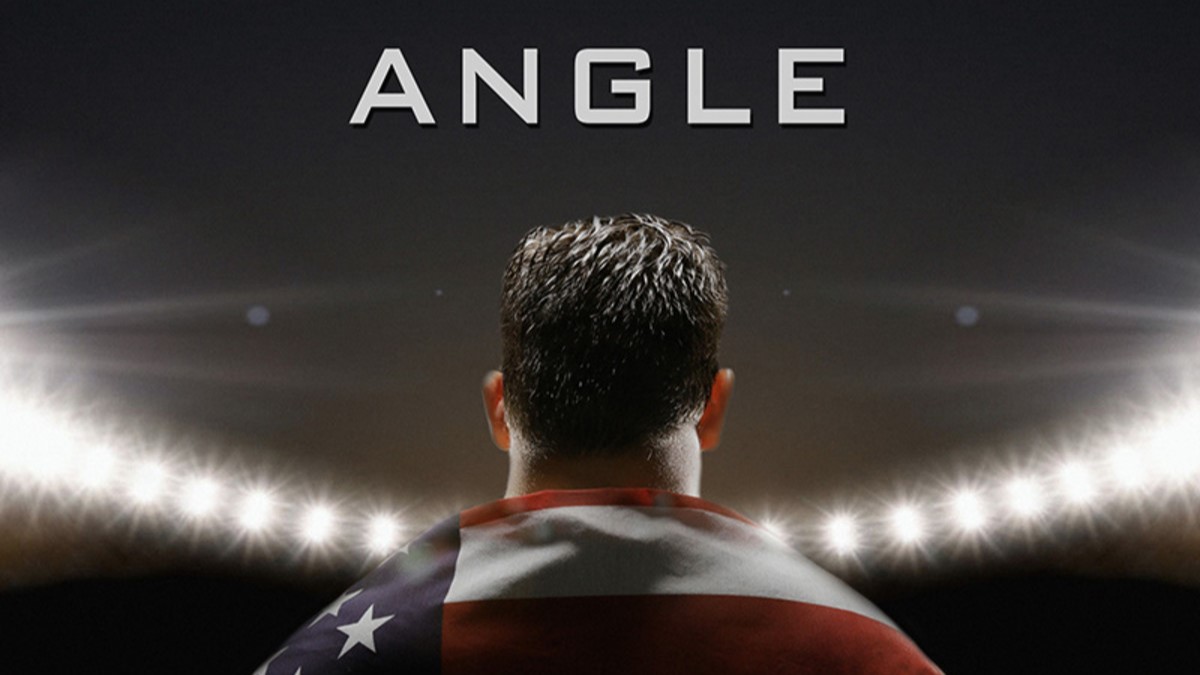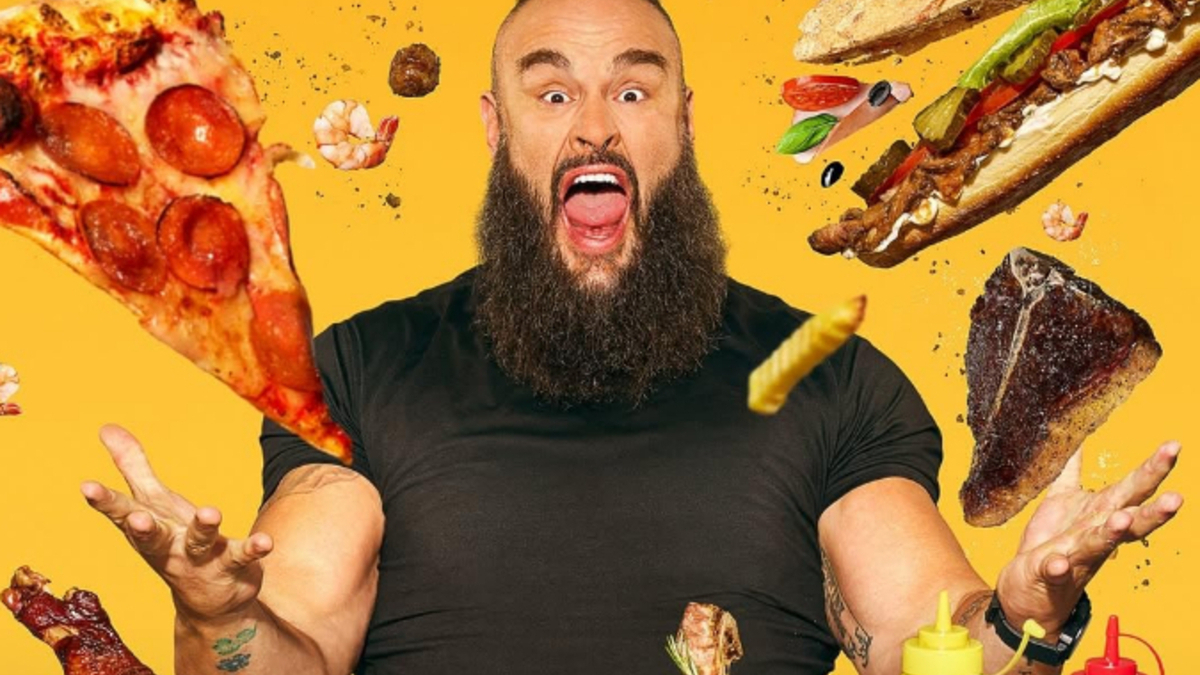New documentary ‘Angle’ available on Peacock TV is very good – but only actually new-ish
If you catch the new Kurt Angle documentary available today on the Peacock streaming service, you’ll get an engaging hour and forty-five minute look into his life, which is great, but it may also look familiar if you’ve been keeping up with the WWE/A&E productions on Biography. That series, which has often played around with repackaging materials from WWE Network shows and presenting them as “new,” is at it again.
So, the good news is that if you missed the episode of Biography, you get a chance to watch a slightly longer version on Peacock — and it’s a really well-told story. The bad news is that it’s more cheeky, regurgitation of previously released material and slapping a new name on it. WWE Studios, Peacock, and everyone else involved needs to do better in releasing wholly original content.
Now, that being said: it is still a great film on its own; just forgive the inevitable repetition in this review from our previously posted review of the A&E Biography version.
Beginning in Angle’s hometown of Pittsburgh, he talks us through his first love of football, with his brothers Johnny and Eric acknowledging his competitiveness and their communal love of sports – extending to their parents and sister too. Another brother, David, jumps in to talk about those other three boys fighting – maybe he just wanted everyone to get along?
Le’Anne, the only daughter, and parents Jackie and David, are talked about in memoriam, with all three having passed away: David in a construction site accident, Le’Anne due to an overdose, and Jackie to cancer. Angle recalls in harrowing detail the scene of his mother making the decision to take his father off the life-sustaining apparatus in the hospital, breaking down as he speaks.
Angle took all of the emotion that came with that as a teen and charged headlong into sports: first football and then wrestling, becoming a state champion and beating people that he shouldn’t have beaten, according to Johnny. Enter a rivalry with Sylvester Terkay in college, with Terkay seemingly amusingly recalling how the smaller, quicker Angle beat him with one sudden move, setting Angle up to to challenge for the Olympics trials.
That journey doesn’t start well for Angle, and with his confidence crushed he headed to the famed Foxcatcher training facility. Dave Schultz, the recruiter of the facility, saw the potential in Angle, and they decided that he needed to outwork and out-condition his opponents.
Angle’s intense workout schedule, 10 hours a day for 360+ days a year, pays off in the 1995 World Championships, as an overtime match saw Angle remain in top shape while his opponent in the final was exhausted.
Shortly after this high point, through, the Foxcatcher facility was in lock down when the owner of the training centre, John Du Pont, shot and killed Schultz in the driveway of their home on the estate. Dave’s widow Nancy saw it happening and held her husband as he died. Angle got himself off the Foxcatcher payroll just months before the Olympics, but Nancy reached out to him to say she was starting a Dave Schultz Wrestling Club, of which he became the first member.
In the beginning of a match, we see Angle try to block himself from landing on his back by using his head to divert his landing; he heard snapping and popping from his neck but, pushing through, continues on in the tournament. Faced with the chance of missing out on the top place in the trials, he continues to the finals on the pushing of his coaches even though he kept saying he didn’t think he could wrestle.
He won the finals of the U.S. Open tournament by, as he describes it, not wrestling and pushing his opponent back to keep his distance. After that, he hears from doctors about the risks of wrestling with the broken vertebrae in his neck. He seeks treatment that included shots of novocaine before each match.
So, as you may have heard a few times, Angle marches through the Olympic trials with a broken freaking neck – and, as he says, every one of his opponents knew about it. In the finals, his neck was a big target but the novocaine did its part, and his opponent’s game plan didn’t work because Angle didn’t feel a thing. He was able to take advantage of the attack strategy, and it was on to the 1996 Olympics in Atlanta.
Mark Henry, a fellow Olympian in 1996 in weightlifting, and Ronda Rousey, Olympic Bronze medallist in Judo in 2008, chime in on the dedication it takes to even get to the Olympics, and it’s most notable that, approaching the halfway mark of the movie, the professional wrestling connections are starting to become more prominent.
In the finals, Angle employed his technique of outlasting his overpowering Iranian opponent, getting into overtime with more energy and he finishes strong, winning the referee’s decision in a spot that, again, with knowledge of the future, played out remarkably close to a pro wrestling finish. Jadidi, the Iranian, raised his own hand while holding the referee’s, making it look like he was the victor, but the ref pulled it down and officially raised Angle’s to bring his Olympic journey to a close.
Now, the next phase begins. Angle admits, as he has in the past, that he initially dismissed any notions or overtures about getting into pro wrestling. Skipping past his near, but not that near involvement with ECW, we accelerate through his early time in the then-WWF with his dislikeable hero gimmick through to his bald, master technician run against the likes of Undertaker and Shawn Michaels in the 2000s. Ric Flair, Dwayne Johnson, Jim Ross, and Steve Austin all attest to Angle’s great run in the WWE.
Now the other side of a life in the ring: Angle’s injuries and addictions. Another broken neck before Wrestlemania XIX, followed by another after a chair shot by Brock Lesnar, and yet another at WrestleMania XX. A fourth broken neck in the WWE alone was awaiting him upon his return, and that’s on top of the tears, sprains, dislocations, lost teeth, and other breaks that Angle lists off.
His second wife, Giovanna, started seeing the signs of her husband’s dependency on pain medications. He also learned that his sister was having her own drug issues, after he had been unknowingly funding it as she kept asking him for money to help with bills. He recalls telling her that he gave her an ultimatum that if she didn’t get clean he wouldn’t talk to her. She didn’t, he held true to his word, and didn’t speak to her for the next right months before she died.
Now, Angle breaks down again and only wishes that he’d spoken to her instead of keeping his word.
Angle’s painkiller usage increased, with him using it to mask his emotional pain as well. He details having about 18 pills waiting on his bedside table just to get himself out of bed in the morning – topping out at his estimate of 65 Vicodin a day. He admits that his addiction overpowered his commitment to wrestling, friends, family, or anything else.
Faced with Vince McMahon’s order to go to rehab, Angle heads to TNA which Austin calls below their level, and Ross calls a “debacle.”
Adding alcohol to his drug addiction and amassing DUIs, Angle’s lowest point in his life sees him in jail, hearing an ultimatum from Giovanna to straighten up or lose her and their children. All this time, Angle recognized his father’s functioning alcoholism in his own behaviour. He commits to getting clean, and describes in detail the struggles of his withdrawal, which he is now scared of and never wants to go through again. Even when injuring his knee a year after drug rehab, Giovanna refuses to let him take any painkillers through his physical rehab. He uses exercises and yoga as a substitute.
The film concludes with his happy, healthy condition, a WWE Hall of Fame induction, and a message that, in a sense, it was all worth it. Not that he’s excusing his mistakes, but more that he’s accepting them as part of his journey to where he is today, and how lucky he is that he made it through the tough times to find peace.
Find the film on Peacock TV today — it’s well worth the watch (unless you’ve seen it before).
RELATED LINKS
Aug. 1, 2022: It’s true! Kurt Angle perfect Biography subject




